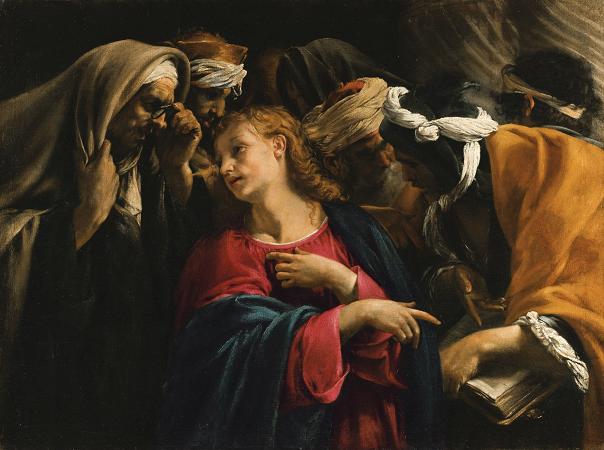Caravaggisti Painting. The Caravaggisti were stylistic followers of the 16th-century Italian Baroque painter Caravaggio. His influence on the new Baroque style that eventually emerged from Mannerism was profound. Caravaggio never established a workshop as most other painters did, and thus had no school to spread his techniques. Nor did he ever set out his underlying philosophical approach to art, the psychological realism which can only be deduced from his surviving work. But it can be seen directly or indirectly in the work of Rubens, Jusepe de Ribera, Bernini, and Rembrandt. Famous while he lived, Caravaggio himself was forgotten almost immediately after his death. Many of his paintings were reascribed to his followers, such as The Taking of Christ, which was attributed to the Dutch painter Gerrit van Honthorst until 1990. It was only in the 20th century that his importance to the development of Western art was rediscovered. In the 1920s Roberto Longhi once more placed him in the European tradition: Ribera, Vermeer, La Tour and Rembrandt could never have existed without him. And the art of Delacroix, Courbet and Manet would have been utterly different. The influential Bernard Berenson stated: With the exception of Michelangelo, no other Italian painter exercised so great an influence. At the height of his popularity in Rome during the late 1590s and early 1600s, Caravaggio's dramatic new style influenced many of his peers in the Roman art world. The first Caravaggisti included Mario Minniti, Giovanni Baglione, Leonello Spada and Orazio Gentileschi. In the next generation there were Carlo Saraceni, Bartolomeo Manfredi and Orazio Borgianni as well as anonymous masters such as the Master of the Gamblers. Gentileschi, despite being considerably older, was the only one of these artists to live much beyond 1620, and ended up as court painter to Charles I of England. His daughter Artemisia Gentileschi was also close to Caravaggio, and one of the most gifted of the movement. Yet in Rome and in Italy it was not Caravaggio, but the influence of Annibale Carracci, blending elements from the High Renaissance and Lombard realism, which ultimately triumphed. Other artists active in Rome, worth mentioning, include Angelo Caroselli, Pier Francesco Mola, Tommaso Salini and Francesco Buoneri. Giacinto Brandi was active mainly in Rome and Naples. Dutch painter David de Haen was active in Rome between 1615 and 1622. In May 1606 after the killing of Ranuccio Tomassoni, Caravaggio fled to Naples with a death sentence on his head. While there he completed several commissions, two major ones being the Madonna of the Rosary, and The Seven Works of Mercy. His work had a profound effect on the local artists and his brief stay in Naples produced a notable school of Neapolitan Caravaggisti, including Battistello Caracciolo, Bernardo Cavallino, Carlo Sellitto, Massimo Stanzione, Francesco Guarino, Andrea Vaccaro, Cesare Fracanzano and Antonio de Bellis. Giacinto Brandi was active mainly in Rome and Naples. The Caravaggisti movement there ended with a terrible outbreak of plague in 1656, but at the time Naples was a possession of Spain and the influence of Caravaggism had already spread there. Marco Antonio Bassetti is known to have been in Rome in 1616, and may have arrived there two years earlier. In Rome he came under the influence of the paintings of Caravaggio and Orazio Borgianni. On his return to Verona he painted a St. Peter and Saints for the church of San Tomaso and a Coronation of the Virgin for Sant' Anastasia. He died from the plague in Verona in 1630. Bernardo Strozzi, born and mainly active in Genoa and later Venice, is considered a principal founder of the Venetian Baroque style. In the 1620s Strozzi gradually abandoned his early Mannerist style in favor of a more personal style characterized by a new naturalism derived from the work of Caravaggio and his followers. The Caravaggist style of painting had been brought to Genoa both by Domenico Fiasella, after his return from Rome in 1617-18, and by followers of Caravaggio who spent time working in the city. Italian painter Biagio Manzoni was active in Faenza. Italian painter from Reggio Emilia Bartolomeo Schedoni, Daniele Crespi from Milan and Luca Cambiasi, also known as Luca Cambiaso and Luca Cangiagio, the leading artist in Genoa in the 16th century, often depicted brilliantly lit figures set against a dark background. Felice Boselli, active in Piacenza, used contrast Caravaggisti lighting for his still-lifes.
more...













